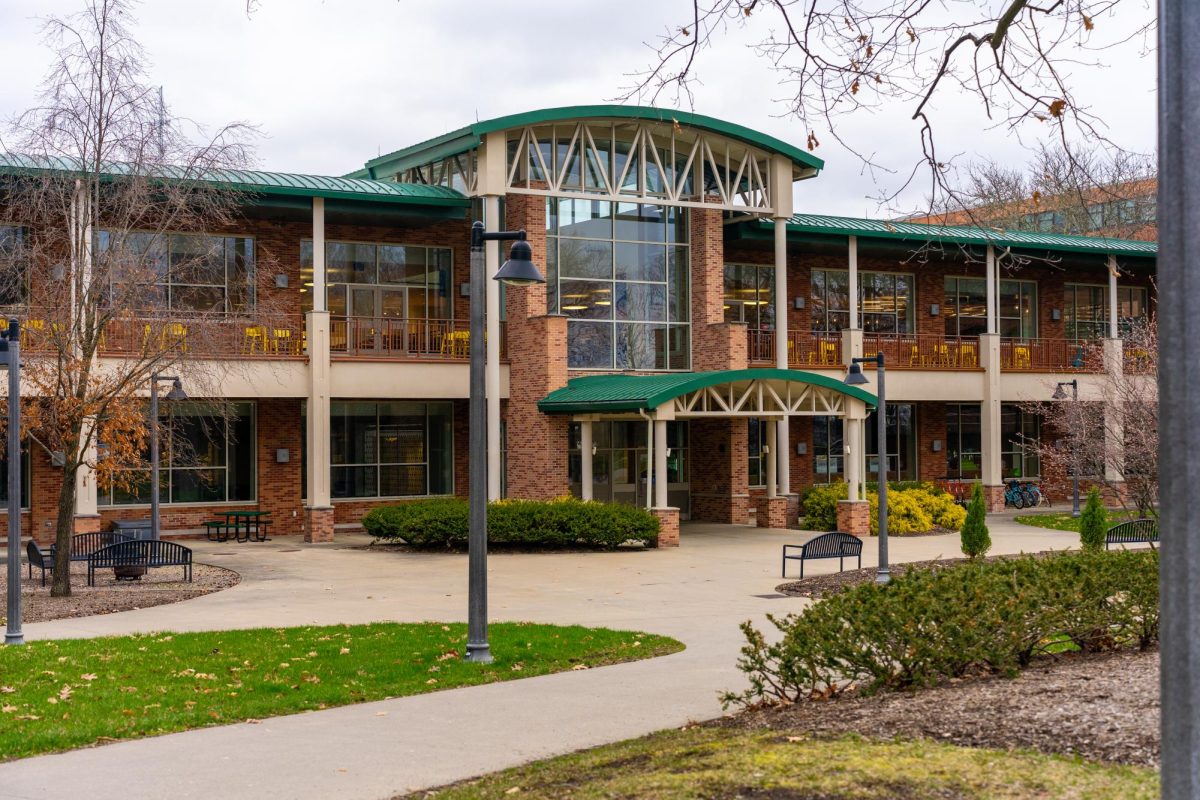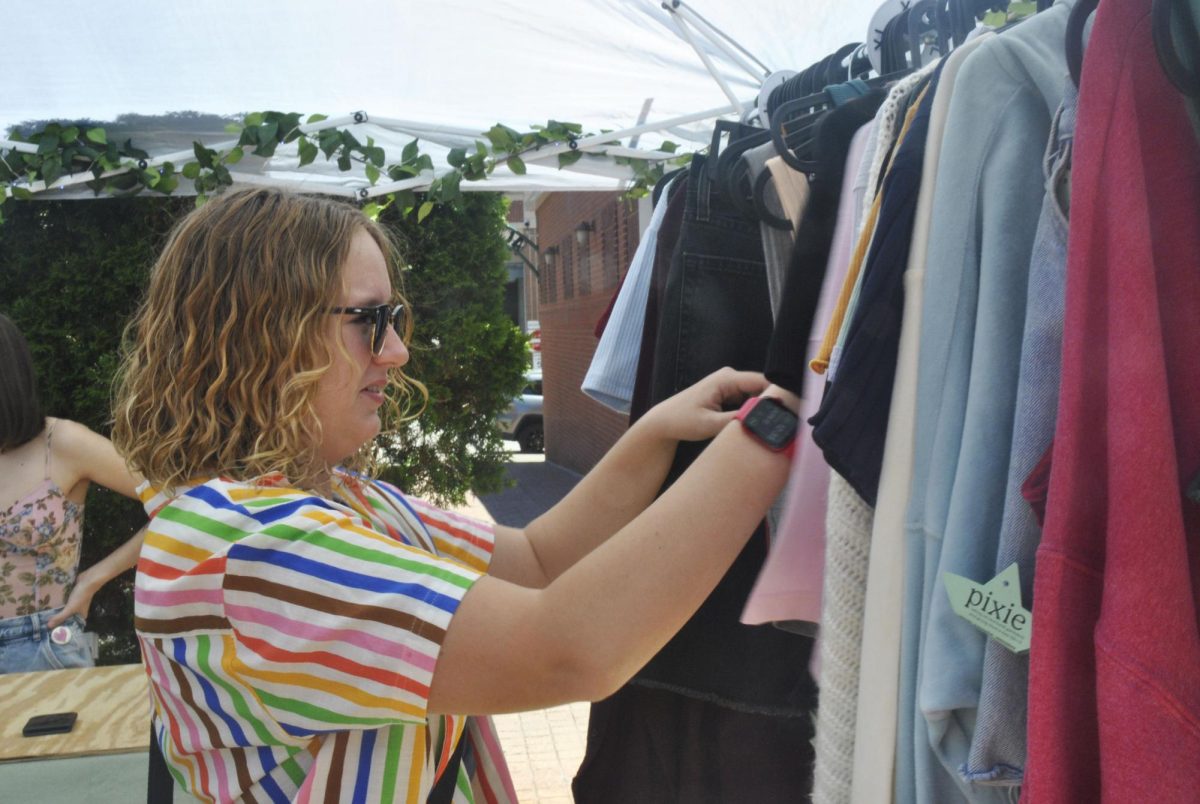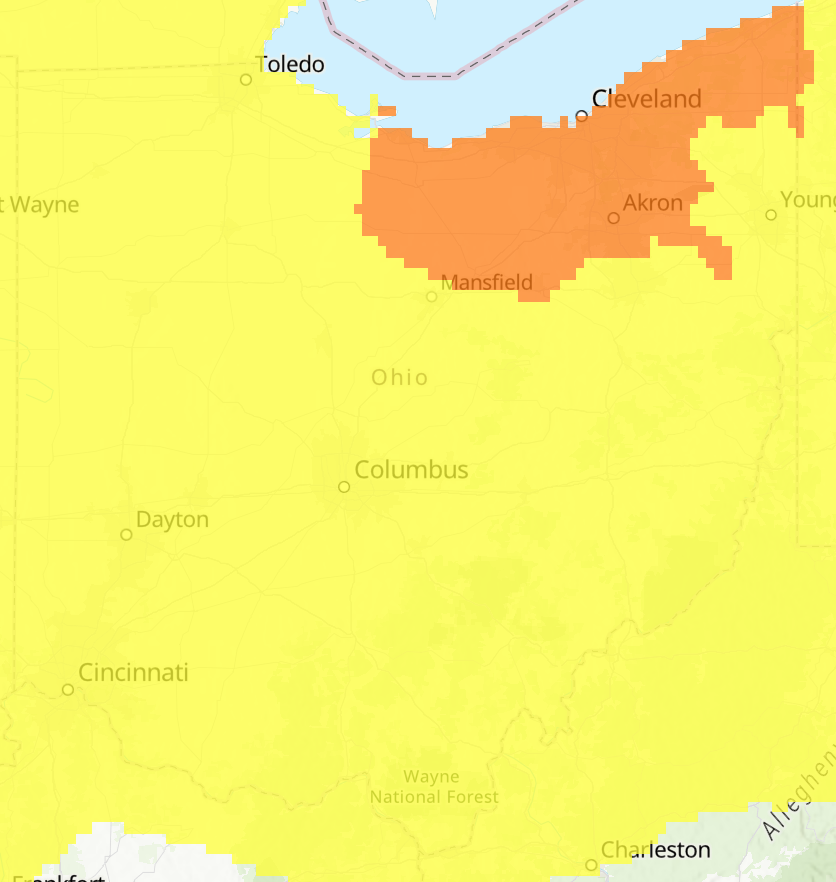Every day hundreds of students, faculty and visitors eat at Kent State’s dining halls. At the end of each day, the dish returns and food serving trays are filled with uneaten food. What happens to all of that uneaten food?
One way that Kent State handles uneaten food, according to Campus Executive Chef Steven Walk, is by repurposing food that is still good. If any of the food is still able to be served at the end of the day, it will be used.
“There’s always a percentage of built-in waste,” Walk said. “But it’s about how we limit that waste … are there other things that we can do to utilize that product? If I have grilled chicken breasts on the grill at the end of the day, do I have to throw them away? Or can we cool it down properly, chop it up, and put it on the salad bar for tomorrow?”
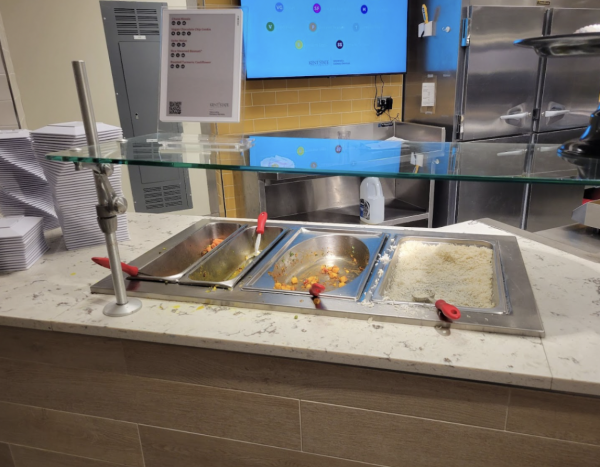
Though not all of the food can be reused, Walk said they make sure to reuse the foods that last, such as raw vegetables.
After separating the uneaten food that can still be used from the rest, there is still food that needs to be disposed of. After partnering with InSinkErator in 2020, Kent State implemented the Grind2Energy system to redirect food waste from landfills to energy production.
“Our food waste doesn’t go into landfills, it goes into the Grind2Energy program.” Walk said. “We’re trying to repurpose things as much as we can to keep things out of landfills, so we’re putting it to use as energy.”
The Grind2Energy system works by grinding down food waste, recovering its water and converting its captured methane into renewable energy. Former DI Hub Manager Elizabeth Dorner described the process.
“Every night, all of the food that’s left in the store that has been cooked gets wasted, so all of it gets dumped into bins, then ground. The rotting food is kept in a giant cylinder,” Dorner said. “Then, they use the methane gas to make energy. We have a ton of food waste, but they try to do something with it.”
After all of the food has been separated into what can be reused, and what is inedible, there are still foods that are safe to eat, but are not up to dining hall standards. What should be done with this excess food?
One solution proposed by the Food Recovery Network is to redistribute wasted food to those facing food insecurity.
“The number one goal is always source reduction,” Food Recovery Network Program Assistant Matthew Taboni stated. “But from our perspective, the second-best option is donating food to those in need, keeping it in the supply chain, and redirecting it to help those in need.”
Taboni said programs like Grind2Energy are favorable to food waste ending up in landfills, but are not a perfect solution.
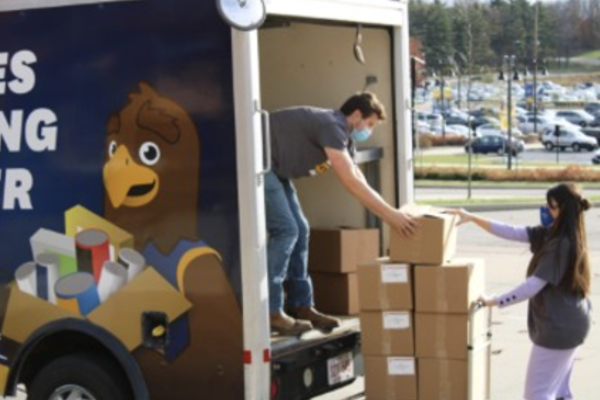
“Our goal is always to get it to people who need it first, then find the alternative solutions after that,” he said.
Kent State does redistribute a portion of its food waste through food waste redistribution programs.
“It’s a handful of sandwiches a week from all of our retail spaces combined, and catering, if you book a party for 500 and only 150 show up, we’ll donate all of that,” Walk said.
One of these programs that redistributes Kent State’s food waste is Flashes Fighting Hunger, a student-powered organization that aims to address food insecurity and redistribute food waste to those who need it.
“In 2023, we recovered 152,223 pounds of food, and almost all of that, we redistribute,” said Craig Berger, associate director in Community Engaged Learning. “Our waste rate is usually anywhere from 0.75% to 2%, maybe a little above that sometimes, but it’s usually very, very minimal.”
Though Flashes Fighting Hunger does help redistribute food waste from Kent State’s culinary services, Kent State is not FFH’s biggest supplier of food waste.
“Kent State is not one of the top two at this point,” Berger said. “We primarily get it from Trader Joe’s and Akron-Canton Food Bank.”
In 2023, Kent State’s culinary services made up 1.7% of FFHs food recovered, whereas Trader Joe’s and Akron-Canton Regional Food Bank made up 84.1% and 14% respectively.
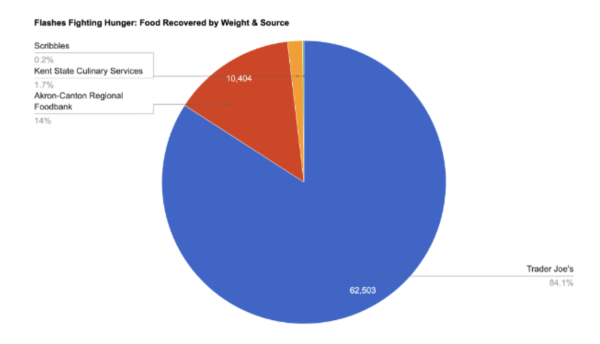
Along with Kent State’s methods to repurpose food waste, they also have methods of reducing the food that is wasted.
“This year we implemented a menu management system; we assign things to produce, then the staff can track it … every time we run something we know how well it sells or does not sell,” Walk said. “As we move forward we are going to adjust our production to what actually sells to help reduce waste.”
Currently, there is no simple way for students, faculty, and visitors to track food waste at Kent State. However, Kent State’s culinary services hope to change this with the implementation of Leanpath.
“We just signed the contract this week. It’s a waste management program,” Walk said. “It tracks post-consumer waste so as you take your plate of food back to the dish room, we can weigh all the food products that were dumped out of there, and we can do real-time tracking.”
Walk said that people need to see the uneaten food as a challenge to reduce food waste.
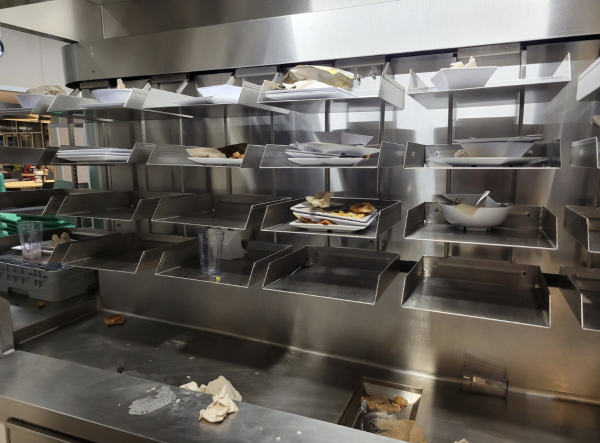
“They’re going to be out by the dish rooms in both dining centers, so you can see it somewhat live and be updated throughout the course of the day,” Walk said.
He hopes that this system will help consumers understand the issue of food waste, and know how to help reduce it.
Quintin Page is a reporter. Contact Quintin at [email protected].













